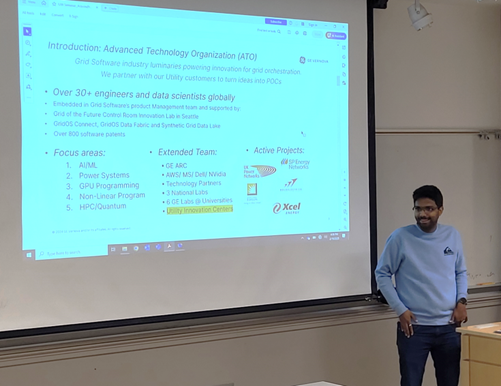Grid Control Room Operations Software
Currently, operators in grid control rooms rely on various software systems (EMS and DMS) along
with isolated data sources, in conjunction with operational manuals and their previous
experiences, to determine prompt and effective actions aimed at reducing the effects of severe
weather occurrences (such as hurricanes, storms, wildfires, and heat waves) and evolving weather
trends that influence renewable energy generation. As the grid's complexity escalates, there is a
pressing need for a solution that facilitates easier data retrieval and enhances user engagement for
grid analysis and operations. Additionally, it is crucial to provide adequate preparation and training
for both existing and future control room operators to navigate this complexity more effectively.
Date and Time
Location
Hosts
Registration
Speakers
Aravindhan
Grid Control Room Operations Software
Currently, operators in grid control rooms rely on various software systems (EMS and DMS) along
with isolated data sources, in conjunction with operational manuals and their previous
experiences, to determine prompt and effective actions aimed at reducing the effects of severe
weather occurrences (such as hurricanes, storms, wildfires, and heat waves) and evolving weather
trends that influence renewable energy generation. As the grid's complexity escalates, there is a
pressing need for a solution that facilitates easier data retrieval and enhances user engagement for
grid analysis and operations. Additionally, it is crucial to provide adequate preparation and training
for both existing and future control room operators to navigate this complexity more effectively.
Biography:
Aravindhan Vadivel is the Manager – Grid Operations at GE Vernova. He manages a team of Power System Engineers in the Advanced Technology Organization (ATO) focused on innovation using AI/ML for Transmission and Distribution applications. In his prior role within GE, he led the team working on the design, development, and deployment of GE WAMS Solution for Utilities, ISOs/RTOs across the globe. He received his master’s in electrical engineering with focus on Energy Systems from the State University of New York at Buffalo and is an active member in IEEE, NASPI and other forums.
Agenda
Currently, operators in grid control rooms rely on various software systems (EMS and DMS) along
with isolated data sources, in conjunction with operational manuals and their previous
experiences, to determine prompt and effective actions aimed at reducing the effects of severe
weather occurrences (such as hurricanes, storms, wildfires, and heat waves) and evolving weather
trends that influence renewable energy generation. As the grid's complexity escalates, there is a
pressing need for a solution that facilitates easier data retrieval and enhances user engagement for
grid analysis and operations. Additionally, it is crucial to provide adequate preparation and training
for both existing and future control room operators to navigate this complexity more effectively.

 Add Event to Calendar
Add Event to Calendar
